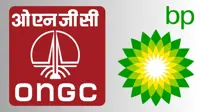Budget to set roadmap for the economy
30 Jun 2014
 For the first time in the last two decades, India has registered two consecutive years of sub-5 per cent GDP growth. The last few years have been extremely difficult for doing business, as the nation has been in the grips of an administration paralysis and the situation has been further aggravated due to government's increased reliance on monetary tools to contain a stubbornly high inflation.
For the first time in the last two decades, India has registered two consecutive years of sub-5 per cent GDP growth. The last few years have been extremely difficult for doing business, as the nation has been in the grips of an administration paralysis and the situation has been further aggravated due to government's increased reliance on monetary tools to contain a stubbornly high inflation.
High interest rates have not only increased the cost of doing business, but discouraged investments in infrastructure and manufacturing sectors thereby increasing input costs and widening the supply-demand gap. The economy is on the verge of entering a vicious cycle as even global investors started losing both confidence and interest in India in view of the complicated and opaque operating environment.
The despondent mood which was setting in seems to have now been overcome after India delivered a decisive verdict by electing a majority government at the 15thLok Sabha elections.
With the BJP-led NDA government coming to power at the centre, hopes are high that the economic reforms will be now back on track and India will soon be back on the high growth trajectory. The new government, it seems, recognises that the high inflation in India is essentially due to supply-side constraints in terms of inadequate infrastructure and made it adequately clear that infrastructure creation figures among its priority agenda.
In this backdrop, the Union Budget 2014-15 is expected to set a roadmap for the economy as a whole and the infrastructure sector in particular. The forthcoming budget will be followed very keenly both domestically and internationally.
The new government's announcements about undertaking river-linking, creating high-speed train tracks, building low-cost airports, expansion of e-governance, etc. have already generated a buzz in the infrastructure circles.
We expect the budget to address issues and remove hurdles that can fast track capacity creation in power and road sectors.
In the power sector, 100 per cent fuel linkage to all power plants from the nearest mines must be ensured, which calls for increasing production and productivity of the coal-mining companies and by allowing entry of private sector for mining development.
This has to be supplemented with distribution sector reforms by revisiting tariff-setting norms which should adopt a principle of ''not passing through'' the AT&C losses beyond a certain percentage. To this end, the budget may announce specific incentive packages for both generation and distribution side issues. There should be a ''carrot and stick'' approach for the distribution companies.
In the road sector, government needs to encourage innovative financing mechanisms which can address the mismatch between loan tenure and concession period (the former being much shorter than the latter, thus leading to problems in servicing loans).
For BOT projects, the budget may propose a financing structure where the repayment schedule is such that 50 per cent of the total debt is repaid during the loan period and balance 50 per cent is to be repaid by way of bullet payment (lump sum payment for the entire loan amount paid at maturity) at the end of the tenure. The bullet payment can be done by arranging refinancing of the balance 50 per cent debt, repayable over the remaining concession period. This will spread out the repayment of the debt over the entire concession period.
Extrapolating the above point, financial institutions should be allowed to step in the concessionaire's shoes, if by chance, the concessionaire is not able to either complete or manage the project. The finance minister should also encourage banks, insurance companies, pension funds and provident funds to invest in long-term bonds with investment grade issued by Infrastructure Finance Companies at concessional rates and should declare it as ''priority sector lending''.
In India's infrastructure financing, NBFCs, especially the asset finance companies (NBFC-AFCs) and Infrastructure Finance Companies (NBFC-IFCs), play a crucial role by catering to the credit needs of numerous small and medium enterprises (SMEs) who provide critical support services (like construction, transportation, etc.) in infrastructure projects and yet remain outside the purview of institutional funding channels. We propose that the government announces measures in the budget that would enable NBFCs to easily mobilize resources from various sources, both domestic and foreign.
a) Domestic - Part of the long-term domestic resources like pension and insurance funds can be channelised into infrastructure financing. So far, insurance and PF agencies are allowed to invest in mutual funds. If government allows them to invest in NBFC-AFCs and NBFC-IFCs, that would go a long way in addressing the asset-liability mismatch problem for NBFCs.
b) NBFC-AFCs and NBFC-IFCs rely heavily on ECB as a source of long-term funds. Presently, the utilisation of ECB by NBFCs is also subject to some restrictive clauses.
With rising investments in infrastructure, the infrastructure and construction equipment (ICE) industry is also growing in India. The number of domestic ICE businesses has increased over the years and many foreign ICE players are also setting up manufacturing bases in India. However, as per present conditions NBFC-AFCs are allowed to utilise ECB funds only on imported ICE. This makes little sense in the current circumstances. Through the budget, the government should allow NBFC-AFCs to utilise ECB for financing of domestically manufactured equipment as this would provide a strong fillip to this industry.
The RBI has relaxed ECB norms for NBFC-IFCs by allowing them to avail ECB up to 75 per cent of their owned funds without approval (earlier the limit was 50 per cent). For availing ECBs beyond 75 per cent of their owned funds, NBFC-IFCs would require the approval of the RBI and will, therefore, be considered under the approval route.
Also the hedging requirement for currency risk for NBFC-IFC has been reduced to 75 per cent of their exposure from the erstwhile 100 per cent exposure. However, the ECB access conditions for NBFC-AFCs remain unchanged. Since NBFC-AFCs also play a crucial role in financing of infrastructure assets, the budget should bring the ECB criteria for NBFC-AFCs at par with NBFC-IFCs.
Fiscal deficit
India's fiscal deficit constrains the government in terms of undertaking fresh investments in infrastructure. While private investment is being assigned a major role in infrastructure creation in India, government also needs to explore avenues for generating new resources so that it is able to invest in infrastructure on its own. In this regard, rolling out the Goods & Services Tax (GST) at the earliest is a must.
GST has remained a pipe-dream for several years now and the new government must do everything possible to build consensus in making GST a reality. The complex, and often, lax state laws that exist today make it very difficult for movement of goods between states. It is more difficult in many states to move goods to another state, but easier to import or export overseas. Introduction of GST will bring in some degree of uniformity. Not only will it increase the government's kitty, it is also expected to bring in a lot of clarity and transparency in terms of tax implication on business. We hope the budget to set some timeline for the implementation of GST.
The Reserve Bank of India has permitted such resident entities / companies in India, authorised by the government, to issue tax-free, secured, redeemable, non-convertible bonds in Indian rupees to persons resident outside India to use such borrowed funds for on lending / re-lending to the infrastructure sector and for keeping in fixed deposits with banks in India pending utilization by them for permissible end-uses.
This implies that eligible entities will be only companies controlled and owned by government of India such as Power Finance Corporation, Rural Electrification Corporation, National Housing Bank, etc. Through the budget, the government must expand the list of such eligible entities to include public financial institutions (PFIs) also for issuing overseas bonds.
Venture capital funds (VCFs) / alternative investment funds (AIFs) provide equity to infrastructure and other projects. Unfortunately, an amendment made by the Finance Act, 2012 in Section 115U of the Income Tax Act, 1961, has created an anomaly whereby investors have to pay tax on the notional income.
Normally, investors should pay tax on the income, as and when they receive it. However, the amendment in 2012 requires the tax to be paid when the fund earns income. This would be tantamount to paying tax out of the capital of the investor. Tax should be on real income and not on notional income. This has emerged as a major deterrent for attracting future investments by the contributors in VCC / VCF. If this is not addressed, the entire objective of encouraging VCFs / AIFs will stand defeated.
Through this budget, government must re-introduce the tax-saving infrastructure bonds, a scheme which continued till two years ago before being unceremoniously discontinued. However, the minimum limit should be increased to Rs50,000 per person per annum vis-à-vis the previous limit of Rs20,000.
For an emerging nation like India where majority of infrastructure players are cost-conscious SMEs, to facilitate infrastructure financing it is imperative to nurture and encourage leasing.
Worldwide, it has been empirically established that leasing is the most potent and cost-effective form of capital creation. But in India, due to a lack of understanding at the policy making levels about the efficacy of this instrument, leasing has been treated both as a sale and a service and thus taxed multiple times effectively nullifying its advantage. For the sake of India's future, leasing needs to be revived. The budget can help in bringing some clarity on taxation on leasing. Hopefully, once GST is introduced, the confusion will get sorted out.

.webp)
.webp)

.webp)

.webp)


























